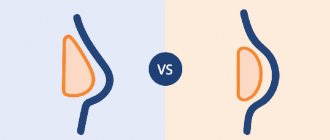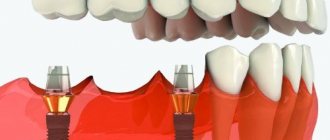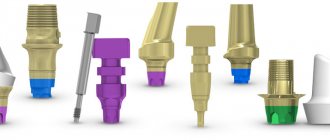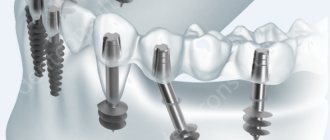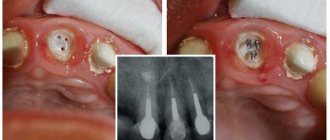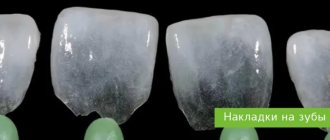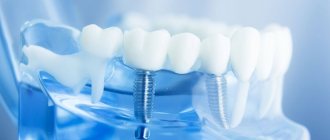The Natrelle line of breast implants comes in a wide variety of shapes and sizes. Each woman can choose the optimal type of product with which she can achieve the desired result and radically change the appearance of her breasts. All products are manufactured using a unique technology, which allows us to achieve high safety indicators and minimize the risk of complications.
| INSPIRA style | Style 410 | Style 510 |
The surface of Natrelle implants has a special textured structure, which was obtained using BIOCELL™ technology
It has the following features:
- Allows you to reduce the severity of capsular contracture.
- Allows you to avoid displacement of the implant.
- Increases fixation strength.
Natrelle implants have a special shell design:
- The implant is completely covered with a special barrier layer, which is made using INTRASHIEL™ technology, which minimizes the diffusion of the silicone filler.
- The shell is made of high quality silicone, which increases reliability and reduces the risk of rupture.
- Due to the patented technology of fixing the patch, it is possible to achieve high strength.
The safety of Natrelle implants is fully proven.
The results of the operation continue to please the woman for a long time. According to the survey, 97% consider surgery to be the right choice for themselves and note self-confidence, attractiveness and enjoyment of life.
Natrelle implants come in a very wide variety, so every woman can choose the optimal type of product based on her preferences.
Natrelle Round Breast Implants
The Allergan Natrelle Inspira line of round implants has the following features:
- In order to reduce the likelihood of contouring, the optimal volume of filler was selected.
- Due to the unique surface structure, it is possible to reduce the likelihood of capsular contracture to a minimum.
- A special barrier layer reduces the likelihood of filler diffusion.
- A durable shell increases the reliability of the implant.
- The line has a wide variety of products.
- The implant shell can be smooth or textured.
- There are two types of implant filling: high-quality silicone gel and Soft Touch™ gel.
- The implant profile is presented in 5 options.
- Wide range of sizes.
- Wide variety of projections.
Natrelle anatomical breast implants
- Due to the anatomical shape of the implants, it is possible to obtain a natural result and a proportional breast shape, and also preserve them for a long time.
- The special surface texture obtained using BIOCELL™ technology reduces the likelihood of rotational displacement of the implant and prevents the development of capsular contracture.
- Anatomical implants are characterized by minimal gel diffusion due to a special barrier layer made using INTRASHIEL™ technology.
- The implant has special marks that allow the surgeon to correctly position it and give the breast the desired shape.
Natrelle anatomical breast implants are available in 12 options. The patient can choose from 4 different projections and 3 height options. There are two types of implant filling: high-quality silicone gel and Soft Touch™ gel.
Anatomical implants filled with two types of gel
- The anatomical shape allows you to achieve a natural, proportional result.
- Due to the beveled edges and concave base, the implant fits perfectly and is not noticeable when palpating the breast.
- The filling of the implant is represented by two types of Tru Form Dual Gel. At the back is a cohesive gel that can remember its shape. In the front part, the gel is denser, due to which it is possible to maintain the projection of the implant.
- The special surface texture obtained using BIOCELL™ technology reduces the likelihood of rotational displacement of the implant and prevents the development of capsular contracture.
- Anatomical implants are characterized by minimal gel diffusion due to a special barrier layer made using INTRASHIEL™ technology.
- The implant has special marks that allow the surgeon to correctly position it and give the breast the desired shape.
Characteristics of breast implants
Breast implants differ in more than just their shape. They have many characteristics, and the choice of each of them depends on many components. Let's look at the main ones.
Form
The shape of the endoprosthesis determines how natural the breasts will look after plastic surgery. There are two forms of implants:
- round (hemispherical) - the highest point is located in the center of the implant;
- anatomical - they have a teardrop shape, as close as possible to the natural female breast.
Size
Sometimes patients mistakenly believe that only volume affects the size of the implant, but this is not true. Breasts with implants of the same volume will look different on patients with wide and narrow chests. Therefore, the size is determined by three parameters of the endoprosthesis:
- volume - measured in milliliters or grams;
- projection - its height from the base to the top of the dome;
- profile - the relationship between the projection and the width of the base.
Profile
The profile is the ratio of the projection of the implant to the width of its base. It is divided into four categories:
- Low (mini).
This implant has a wide base and a small projection. Low-profile implant models are rarely installed in women undergoing augmentation mammoplasty. They often perform minor corrections for ptosis. - Medium (demi).
This implant profile is chosen when they want to ensure that the breast after mammoplasty looks as natural as possible. Sometimes it is installed as a temporary option in order to then switch to a high profile. - High (full).
The most popular option among those who want beautiful and high breasts. This option is suitable for women with a narrow chest, as well as significant prolapse of the mammary glands. - Extra high (corse).
The highest profile is unnaturally large in size. It is chosen by those who like to attract attention, for example, artists and show business divas.
How much the breasts will stand out after correction depends on the profile.
Surface type
The first breast implants were smooth. The advantages of smooth models include softness, but they often change position inside the implant pocket. Capsular contracture often forms around them, that is, excessive proliferation of fibrous tissue.
Smooth ones were replaced by endoprostheses with a textured or rough surface. The embossed surface of the implant provides better adhesion to the tissues in the encapsular pocket, so such an endoprosthesis moves much less frequently. The fibrous membrane grows less around it. The only drawback of such an implant, which develops only in 0.6% of cases, is the occurrence of the “washboard effect.” In this case, the skin over the gland becomes folded.
Materials and safety
The implant shell is made of silicone. The first generation endoprostheses had a thick shell, then they began to use thinner silicone, which often led to rupture and an increase in the number of capsular contractures. To improve ingrowth into tissue and prevent the development of contracture, silicone was coated with a micropolyurethane foam sponge.
Patient safety is the main rule in plastic surgery. The leakage of filler through the shell (sweating) causes the body's immune response and chronic inflammation. To prevent this from happening, manufacturers of modern endoprostheses provide an additional barrier layer.
Today, implants with “shape memory” made of dense silicone are used, which quickly restore their original shape after compression.
Implant fillers
- Water-salt,
which is a 0.9% solution of sodium chloride (saline solution), is not a reliable filler, since it begins to crystallize after a year. The sharp edges of the crystals can pierce the shell. Saline solution was used in the first endoprostheses. - Liquid silicone
is a liquid with a viscous consistency, softer to the touch than the mammary gland and with weak “shape memory”, sweating is possible. - Cohesive gel
- close in density to the mammary gland. It is characterized by slight sweating and weak “shape memory”. - Highly cohesive gel
- has the consistency of marmalade, practically does not deform, does not sweat through the shell, has excellent “shape memory”, is used in anatomical endoprostheses. - “Soft touch”
is a gel, tactilely similar to the mammary gland, “shape memory” is average, does not sweat.
The advantages of modern shell and filler materials include their low allergenicity and ability to restore shape. Tactilely, they are not much different from the glandular tissue of the breast and practically do not cause capsular contractures.
Features of MENTOR® silicone implants (“Mentor”):
- Endoprostheses for breast correction are manufactured using Memory Gel, a patented filler gel. This silicone has shape memory, that is, the implant instantly restores its previous shape after any mechanical impact.
- The safety of these breast implants has been proven in numerous clinical studies, and the FDA approved MENTOR® products back in 1992. The company provides a guarantee for its products.
- Memory Gel has a special viscosity, which, on the one hand, allows you to recreate the natural density of the mammary glands, and on the other, does not leak if the membrane is damaged.
- To reduce the incidence of negative consequences of breast correction operations associated with the development of postoperative contracture, Mentor produces implants with both smooth and textured surfaces.
Thanks to a unique feature, the risk of capsular contracture is reduced: a natural fibrous membrane is formed around the implant, just like around any foreign body; if it becomes too dense, then this is reflected both in appearance (the implant is palpable and becomes noticeable, the breast is deformed) and on the patient’s health.
Anatomical implants for breast enlargement
An anatomical (or teardrop-shaped) implant is shaped as close as possible to the natural contours of the mammary gland. Under the influence of gravity, the main part of the glandular tissue moves down, and its upper part has insignificant volume. Such implants are chosen by women seeking maximum naturalness.
The purpose of an anatomical implant is to add volume to the breast while maintaining the natural shape. Drop-shaped endoprostheses with a high profile visually enlarge the breasts.
The advantages of anatomical implants include not only the natural shape of the breasts in a standing position, but also a more natural appearance when a woman lies down. When lying down, the actual mammary glands “spread out” and take on a flatter, more rounded appearance. Drop-shaped implants do not “give themselves away”, unlike hemispherical ones.
One of the disadvantages is that when the anatomical implant is displaced in the encapsular pocket, the defect will be noticeable externally, which does not happen with the round version.
In what cases should you choose anatomically shaped implants - advice from a plastic surgeon
Anatomical endoprostheses are well suited for correction of breasts with ptosis. The choice of this form solves the issues of asymmetry, a narrow chest and other features of the body structure. If the breast is without prolapse, normal shape, but insufficient size or volume, the “red line” will help determine the choice of the shape of the endoprosthesis - the distance from the nipple to the inframammary fold that runs immediately under the mammary gland.. Each woman can check what shape the implant will fit by simply measuring this distance with an ordinary tailor's measuring tape.
When breast augmentation is performed with round-shaped implants in women with a short “red line,” the breast areola will be located below the highest point of the implant dome. The nipple in this case will point down. Therefore, anatomically shaped endoprostheses should be chosen for women whose “red line” is from 4 to 6 cm.
In women with a distance from the nipple to the inframammary fold of the breast of more than 7 cm, after installing a drop-shaped implant, the areola will be higher than the top point of the dome, and the nipple will look up. Breasts will look unnatural regardless of size.
McGhan (Natrelle) 150
A distinctive feature of McGhan style 150 endoprostheses is the combination of two fillers (gel and saline) in one implant. Each implant is divided into outer and inner parts, filled with cohesive gel and saline solution, respectively. The 150 style line consists of 14 models that differ from each other in projection height.
Round implants for breast enlargement
The shape of round implants is hemispherical, which after augmentation mammoplasty gives a push-up effect - an increase in the volume of the mammary gland in the upper pole. Such implants look beautiful in the décolleté area.
On the plus side, if the endoprosthesis is displaced, its position will not change. A round implant differs in cost; it can be 30% cheaper than an anatomical one.
While an anatomical implant can solve many aesthetic problems of the breast, round implants cannot be installed in women with ptosis and an asthenic build.
In what cases should you choose round implants - advice from a plastic surgeon
There is an opinion that round implants look unnatural. This is not entirely true. If you choose the right size and profile, the hemispherical version will look harmonious. It is suitable for girls with well-developed pectoral muscles and the presence of a layer of subcutaneous fat that smoothes the contours of the endoprosthesis. If a round endoprosthesis is placed on a thin girl, the breasts will be too contoured and will take on a doll-like, unnatural appearance.
Endoprostheses with a low profile look most natural. Hemispherical implants are installed in women with a “red line” greater than 7 cm. With round endoprostheses it is more convenient to engage in athletic sports.
McGhan (Natrelle) 510
Natrel style 510 implants are ideal for performing augmentation mammoplasty for women with the following anatomical features:
- tubular breast;
- a thin layer of soft tissue;
- Poland syndrome.
The line of this style is represented by 39 product variants, differing in the following characteristics:
- good fit to tissues due to the concave shape of the back surface;
- by combining two types of gel in one implant, which helps maintain its shape without contouring the edges of the endoprosthesis through the skin.
Polyurethane implants. What are they and why are they needed?
In addition to silicone, plastic surgeons may offer you to install polyurethane-coated breast implants. The quality and basic properties of polyurethane endoprostheses correspond to silicone analogues, but the price is slightly higher. Their main difference is that the polyurethane shell practically does not slip in the tissues of the body. Polyurethane implants are most often used in repeated plastic surgeries to completely eliminate displacement (rotation) of the endoprosthesis.
